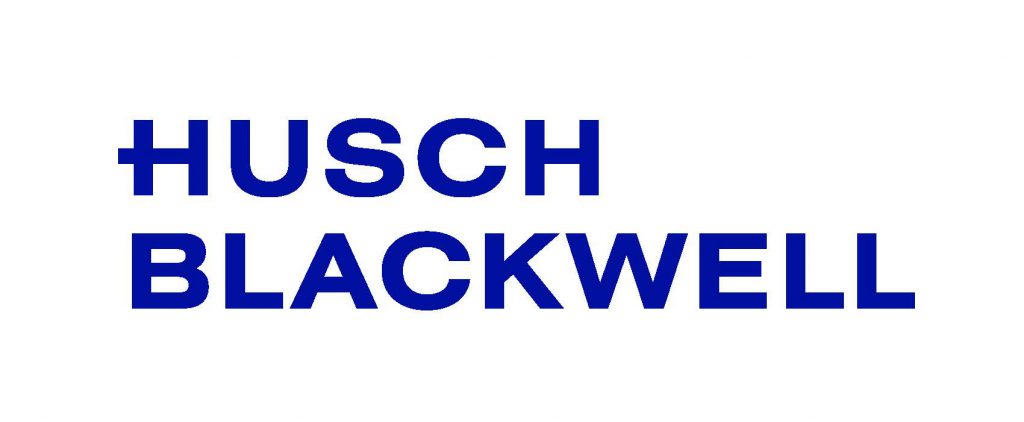- Completed Board Application. Click here to apply.
- Send your resume to ACHE-WI@badgerbay.co
- Support of 10 ACHE-WI members (an e-mail link to support you will be sent after your application and resume are received).
Godfrey & Kahn attorneys elected to leadership roles in the American Health Lawyers Association
Godfrey & Kahn, S.C. is pleased to announce that three attorneys in the firm’s Health Care Practice Group have been elected to leadership positions in the American Health Lawyers Association (AHLA).
- Tom Shorter, a shareholder and chair of Godfrey & Kahn’s Health Care Practice Group was re-elected to the AHLA Board of Directors.
- Jed Roher, a shareholder in the Health Care Practice Group was appointed as a Vice Chair of the AHLA Business Law Group – Transactions Affinity Group.
- Tom O’Day, an attorney in the Labor & Employment and Health Care Practice Groups continues to serve as Vice Chair of AHLA’s Labor & Employment Law Practice Group.
Godfrey & Kahn’s Godfrey & Kahn’s Health Care Practice Group is organized around a core group of attorneys who provide legal services to clients in the health care industry. The team includes attorneys from the firm’s key business and litigation practice groups who provide our health care clients with a wide array of legal services that include: corporate and business transactions; tax and employee benefits; labor, employment and immigration; insurance; public finance; antitrust; litigation; white collar counseling and defense; real estate; political law; and intellectual property.
With more than 160 lawyers, Godfrey & Kahn, S.C. is one of Wisconsin’s leading business law firms. Founded in 1957, Godfrey & Kahn maintains offices in Milwaukee, Madison, Appleton, Green Bay and Waukesha, Wis.; and Washington, DC. For more information, please visit the firm’s website at www.gklaw.com.
Reinventing Customer Service in Healthcare Madison Event Recap
The ACHE-WI Face-to-Face Madison Event brought together a group to discuss Reinventing Customer Service in Healthcare: Lessons Learned from the Best. Attendees learned the strategies that local healthcare leaders have used to improve internal and external customer service. They discovered new initiatives to achieve outstanding patient and staff satisfaction results, increase market share and decrease cost. They also discuss how to meet patient and provider needs in a faster, more cost-efficient way while excelling in safety and retention outcomes. This program was developed by ACHE-WI. The ACHE awarded 1.5 ACHE Face-to-Face Education Credits to this program.
The program was led by moderator Wendy Horton, PharmD, MBA, FACHE, Vice President, Operations, UW Health at the American Center. Panelists included Kristin Baird, MHA, BSN, RN, President/CEO, Baird Group, Teresa Lindfors, FACHE, RN, CNO/VP Patient Services, Stoughton Hospital and John Sheehan, MHA, FACHE, President, UW Health at the American Center.
A special thank you UW Health at the American Center for hosting and our program committee members that planned the program.
- Vonda R. Shaw, MS, MPH, FACHE, Manager – Preventive Cardiology and Heart Station, University of Wisconsin Hospital and Clinics
- Crystal L. Warning, MPH, MSW, Program Analyst, Medical Service, Wm. S. Middleton Memorial Veterans Hospital
- Heidi Skeppstrom Bolling, RN, ANP, NEA-BC, CNOR, Traveling Veteran Coordinator, William S. Middleton Memorial Hospital & Clinics
Regent Award Call for Nominations
Dear ACHE-Wisconsin Chapter member,
One of the joys of being Regent is awarding exceptional chapter members for their contributions to ACHE, the healthcare administration profession and the community. As such, I am requesting your nominations for three Regent Awards for 2017 – the Early Career Healthcare Executive Award, the Senior-Level Healthcare Executive Award and the Diversity Champion Award. Below is the criteria to be considered for each award. Please submit your nominations, with a brief explanation as to why your nominee deserves the award, to me by August 1st. Nominations should be forwarded to me, Andrew Hillig, at Andrew.Hillig@ascension.org.
Early Career Healthcare Executive Award
Criteria:
- A member of the American College of Healthcare Executives
- Demonstration of leadership ability
- Demonstration of innovative and creative management
- Executive capability in developing his or her organization and promoting its growth and stature in the community
- Participation in local, state, or provincial hospital and health association activities
- Participation in civic/community activities and projects
- Demonstration of participation in ACHE activities and interest in assisting ACHE in achieving its objectives
Senior-Level Healthcare Executive Award
Criteria:
- A Fellow of ACHE
- A CEO, COO, or other senior-level executive title within the organization
- Demonstration of leadership ability
- Demonstration of innovative and creative management
- Executive capability in developing his or her organization and promoting its growth and stature in the community
- Contributions to the development of others in the healthcare profession
- Demonstration of leadership in local, state, or provincial hospital and health association activities
- Participation in civic/community activities and projects
- Demonstration of participation in ACHE activities and interest in assisting ACHE in achieving its objectives
Diversity Champion Award
Criteria:
- ACHE Member
- Senior-level executive, Diversity Executive or HR Leader
- Encourages racially and ethnically diverse healthcare executives, who are not ACHE members, to join and become active at both the local (via chapters) and national levels.
- Organizational diversity and inclusion:
- At or demonstrated progress to the 8% national average for diversity in healthcare leadership
- Perpetuates and sustains a diversity and inclusion committee
- The organization’s leaders are required to go through diversity and inclusion training
- Promotes diversity in leadership:
- Offers internships, residencies and fellowships to racially/ethnically diverse students and provide mentoring to help prepare them for success in the job market.”
- Recruits and promotes to increase diversity and inclusion in leadership”
- Mentors and promotes diverse emerging leaders, and encourages ACHE membership
- Promotes healthcare careers to diverse populations via school programs and community organizations.
- Encourages students to shadow healthcare executives and explore careers in healthcare.
- Advocates for diversity in leadership:
- Advocates for healthcare systems that serves racially and ethnically diverse communities
- Advocates for a diverse and inclusive healthcare workplace”
- Works with organizations representing racially/ethnically diverse individuals within their communities to create sources for scholarships and fellowships
- Speaks publicly and advocates for diversity and inclusion
- Extends invitations to host events such as executive breakfasts, chapter networking events and educational programs.
In closing, I hope you have a great summer and please don’t hesitate to reach out to me to discuss your thoughts for how ACHE may advance its members and management excellence in Wisconsin.
Andy Hillig, FACHE
Vice President, Performance Excellence
Ascension Wisconsin
400 W. Riverwoods Pkwy
Glendale, WI 53212
ascension.org/wisconsin
T: 414-465-3658
M: 414-750-2283
andrew.hillig@ascension.org
HSHS Western WI’s Joan Coffman Receives AHA Grassroots Champion Award
Valued Voice, Wisconsin Hospital Association
Every year one individual in each state is honored as a “Grassroots Champion” by the American Hospital Association (AHA) in consultation with state hospital associations. This year WHA nominated Joan Coffman, president/CEO, HSHS St. Joseph’s Hospital, Chippewa Falls, to receive the AHA Grassroots Champion Award for her service and efforts.
“You have earned this special recognition through your dedication to the hospital mission, on both the local and on the national level,” said Rick Pollack, AHA president/CEO. “We want others to be inspired by your commitment to making the hospital voice heard….”
Coffman currently serves on WHA’s Board of Directors, helping guide the Association’s work. She is also the chair-elect to AHA’s Section on Small or Rural Hospitals. In addition to serving in these capacities, Coffman regularly participates in WHA grassroots advocacy initiatives, including Advocacy Day, promoting the WHA grassroots program, HEAT, hosting local legislators and more.
“WHA is grateful for the years of grassroots commitment Joan Coffman has given to our Association, but more importantly to her patients, her hospital and her community in these ways,” said Jenny Boese, WHA vice president, federal affairs & advocacy. “From promoting and attending WHA’s Advocacy Day each year to meeting and communicating regularly with elected officials, she is exactly what a grassroots champion should be. WHA is honored to present her with this well-deserved national recognition.”
Member News: Normington-Slay Named President of Ascension North Central Region Hospitals
Valued Voice, Wisconsin Hospital Association
Ascension has named Jeremy Normington-Slay president for its hospitals in its north central region of Wisconsin. He will provide senior leadership and oversight of Ministry Saint Clare’s Hospital, Weston; Ministry Saint Michael’s Hospital, Stevens Point; Ministry Good Samaritan Health Center, Merrill and Ministry Our Lady of Victory Hospital, Stanley.
Normington-Slay began his career with Ascension Wisconsin as a doctor of physical therapy at Wheaton Franciscan Healthcare – St. Joseph Campus in Milwaukee in 2001. He also has managed critical access hospitals in Cherokee, Iowa and Friendship, Wisconsin, from 2003 to 2014. Normington-Slay comes to central Wisconsin after most recently serving as the chief administrative officer for Mercy Medical Center in Oshkosh, part of Ascension.
Normington-Slay earned a doctorate degree in physical therapy from Concordia University, Mequon and an MBA from Plymouth State University, Plymouth, New Hampshire and is a Fellow in the American College of Healthcare Executives (ACHE) and is currently an ACHE board member of the Wisconsin Chapter. He serves on the WHA Advocacy Committee and has served on the Board of Directors of the Rural Wisconsin Health Cooperative and numerous community boards.
The addition of Normington-Slay rounds out the senior leadership team for Ascension Wisconsin’s North Region. He joins Sandra Anderson who serves as president of Howard Young Medical Center, Woodruff; Ministry Eagle River Memorial Hospital, Eagle River, Ministry Saint Mary’s Hospital, Rhinelander and Ministry Sacred Heart Hospital, Tomahawk. Executive leaders for Ascension Wisconsin’s North Region include Debra Standridge, regional president; Stewart Watson, MD, regional chief medical officer; Sharon Baughman, regional chief nursing officer and Sister Lois Bush, regional vice president of integration.
ACHE – Wisconsin Chapter Membership Challenge
Each Wisconsin member has been challenged to recruit two new chapter members in 2017. Each member that recruits two new members will receive a free ACHE-Wisconsin Chapter golf shirt. Remind your recruits to list your name as the referral when they join ACHE.
Walk the Line: Balancing Patient-Centered Design with Staff Satisfaction
Paul Stefanski, Senior Design Architect, LEED AP, EDAC, Eppstein Uhen Architects
You know the classic Johnny Cash song. It’s one of my favorites from the Man in Black. The other day I realized that Johnny’s struggles are analogous to the challenges we face as designers and healthcare administrators when undertaking “patient-centered” healthcare projects. On the one hand, we have the patient’s needs “on our mind both day and night.” However, we must also “keep our eyes wide open all the time” so we don’t forget the needs of physicians, staff, and administrators. Below are a few tug and pull scenarios that we commonly encounter in our practice. Maybe one or more of them sounds familiar to you:
- Surgeons request more operating rooms due to increased caseload. Digging into the data, it turns out that room utilization is below 50% due to cases being scheduled only in the mornings or on certain days of the week. A patient-centered approach is to expand scheduling hours rather than add more rooms. This gives patients more opportunity to have their procedure completed in a timely manner, and has the added benefit of reducing capital costs.
- Physicians request private offices in their new clinic. Once again, a few probing questions reveal that the doctors will spend very little time in these offices, but do need a place for an occasional private phone call or quick break. Providing a shared collaboration space where the doctors can work directly with their team, in close proximity to exam rooms, can reduce patient visit times. This in turn improves their experience and their perception of the facility. Additional shared off-stage spaces, such as a break room, phone room, or virtual visit room, can complete the transition away from the private office model.
- If you ask most physicians, they would prefer to have a consistent work location and schedule, but more and more we are hearing about how patients want access and convenience; these two factors are playing a large role in patient loyalty. Having locations dispersed in the community may cause increased Physician travel, but for the patient it provides easier access in the communities they live in, with close parking options and moderate sized buildings that are easy to navigate. In a market that is increasingly being driven by consumer preference, this is a win for healthcare organizations.
Walking the Line between “Physician-centered” to “Patient-centered” care can be a difficult task. Let’s face it, change is hard, and making the pivotal conversion means coming up with new ways of doing things. These changes may result in staff turnover, but ultimately it is towards the goal of a truly positive patient experience, an outcome that we know will make a difference in the bottom line. It’s difficult to put a return on investment on a positive patient experience, but I do know it translates to improved loyalty, and improved loyalty translates to a longer relationship with your current patients and reduced patient acquisition costs. Now I would like to hear from you, what is the last “Patient-centered” decision you have made?
2017 Wisconsin Health News Conference
Get the full story on the twists and turns of federal health reform and what it means for Wisconsin at this year’s Wisconsin Health News conference.
We are flying in a full slate of national speakers to provide in-depth perspective on the latest updates and developments. That includes:
- Avik Roy, a leading conservative thinker on health reform who served as a policy advisor to three Republican presidential candidates, including Mitt Romney in 2012.
- Julie Rovner, a Washington D.C.-based senior correspondent for Kaiser Health News and former reporter for NPR.
They will be joining vice presidents from the American Medical Association and America’s Health Insurance Plans, as well as influential experts from Wisconsin, including:
- State Medicaid Director Mike Heifetz
- Deputy Insurance Commissioner P. Wieske
- Wisconsin Hospital Association CEO Eric Borgerding
- Gundersen Health System CEO Scott Rathgaber
- Molina Healthcare of Wisconsin Plan President Scott Johnson
- UW Population Health Institute Program Manager Donna Friedsam
- Wisconsin Collaborative for Healthcare Quality CEO Chris Queram
- Wisconsin Council on Children and Families Research Director Jon Peacock
We’ve also expanded network opportunities throughout the day and expect CEOs, executives and senior leaders from across the state to attend. This will be an event you don’t want to miss.
The Savvy Consumer: Facilities that Create the Provider of Choice
Paul Stefanski, Senior Design Architect, LEED AP, EDAC, Eppstein Uhen Architects
Being a healthcare provider of choice is dependent upon many factors: a patient’s insurance coverage, facility location, and brand reputation, among others. Brand reputation, in turn, is the result of the training of your professional staff, the pricing structure of your services, and the way you conduct yourself as an organization. Your facilities can be a strong influencer of brand perception, since they are often a customer’s first touch point with the organization. Today’s consumers want a hospitality-type experience; to be pampered with warm, non-sterile surroundings in convenient locations while feeling emotionally understood and supported during their visit. Two core hospital departments that touch every family during their lifetime are the Emergency Department and Birthing Center. Let’s take a closer look at how these departments can shape consumer perception of the healthcare organization’s brand and ultimately create lifetime consumer loyalty.
Understanding the Consumer
Before jumping into design, listening to your past and potential future patients can (and should) play a central role in shaping the development of your facility. I recently had the pleasure to work with a forward-thinking client on enhancements to their Birthing Center and Emergency Department. Through focus group feedback we listened to the consumer, finding out what is most important during their visit and ultimately shaping operations and the supporting design.
Birthing Patients want a Personal Approach
Birthing center design can make an impact on the patient perception of the healthcare organization, during an important part of the family growth cycle. The uncertainty inherent with the birthing process (aka when babies decide to join the world outside of the 9 – 5 day) already adds challenges to the experience. Entering through the ED is not the desired experience, and often the primary doctor is not readily available. Focus group feedback uncovered that patients want their provider to ‘know’ their back story and preferences – regardless if he/she is the primary physician.
Being greeted with a friendly face that understands the patient’s personality, challenges and expectations for the birthing experience, with easy, pre-communicated instructions on how to access the department can change the outcome. The programming of the space – protecting the perimeter from inside out helps the family feel safe during this vulnerable time. Focusing on the patient’s emotional experience by separating functions (for example patients struggling with fertility and pregnant mothers) or waiting areas can lessen the psychological impact of the visit. Providing adequate and appropriate space for accompanying family members (both within and outside the room) that utilizes warm palettes and hidden equipment, can transport patients and family outside of the hospital setting.
ED Patients want a Navigator and the Ability to Be Shielded from Others’ Experiences
Inevitably surrounding an upsetting event, the visit to the ED can go many ways when it comes to the patient experience. Focus group feedback cited that patients want access to staff who can handle questions and issues during the stay, easing anxieties. A central core design with glass doors allows staff to observe patients, while giving patients quick access to staff. Whether it’s the security procedures to defend the perimeter and provide a feeling of safety during chaos, balancing the amount of trauma rooms to fit capacity fluctuations and reduce time spent in the waiting room, or controlling the patient’s exposure to others through thoughtful separation of low acuity from high acuity care areas – all these design decisions make a difference on the consumer’s perception.
Consumers want it all – extended hours, short waiting times and personalized services – in one convenient location. We are seeing many healthcare organizations we work with make design decisions intended to sway the savvy consumer. Particularly in Emergency Services and Obstetrics, two touch points that are often a patient’s first exposure to the organization, careful planning can improve experiences and activate brand loyalty. Think of the savvy consumer’s preferences – are your facilities positioned to optimize their experience?







